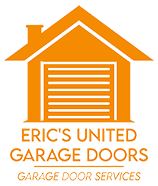As automation becomes the norm in residential systems, the role of precision data in garage door repair has never been more critical. Sensors—especially safety and position sensors—must be calibrated accurately to prevent malfunctions, false reversals, or safety risks. Torque metrics offer a new layer of intelligence, enabling smarter calibration and long-term reliability.
Sensor Function Meets Real-World Resistance
Garage door sensors rely on finely tuned signals to detect motion, alignment, and obstacles. When those readings are off, the door may hesitate, reverse unnecessarily, or fail to stop when needed. Torque measurements give context to sensor behavior, especially when tension resistance doesn’t match expected outputs. This real-world feedback allows for more accurate baseline calibrations. In places where high-use systems are common, such as those needing garage door opener maintenance Sunrise, torque-driven adjustments reduce wear and tear and help avoid service disruptions.
Fine-Tuning for Smooth Performance
While sensors are designed to adapt to typical use patterns, external factors like temperature changes or mechanical strain can alter calibration accuracy over time. Torque metrics capture these variances, highlighting when adjustments are necessary. For example, if a door opener struggles at certain positions, torque readings can uncover underlying resistance that sensors alone may not catch. For users searching garage door opener repair, this kind of data-backed calibration creates a noticeable improvement in daily performance.
Enhancing Predictive Maintenance Capabilities
Using torque metrics in tandem with sensor logs opens the door to predictive maintenance. Technicians can spot trends—such as increasing torque needed to lift a door—which may indicate a misaligned track or worn rollers. These insights allow problems to be fixed early, before safety sensors misfire or the door mechanism is damaged. Forward-thinking garage door repair company operations are already integrating torque analytics into their diagnostic tools, reducing emergency calls and increasing customer satisfaction.
Building a Smarter System
Incorporating torque data into sensor calibration is about more than efficiency; it’s about enabling smart ecosystems. Imagine a system that self-adjusts sensor sensitivity based on torque feedback or notifies a homeowner before a breakdown occurs. This is the direction the industry is heading. Whether it’s a single-door setup or a commercial multi-bay system, using torque as a diagnostic metric adds value, extends hardware life, and supports the evolution of automated home technology.
As sensors become more advanced, the integration of torque metrics ensures they stay finely tuned and responsive to real-world conditions. In the modern landscape of garage door repair, data isn’t just helpful—it’s essential.
Read More:
Fine-Tuning Drum Performance with Torque Monitoring in Garage Door Repair

